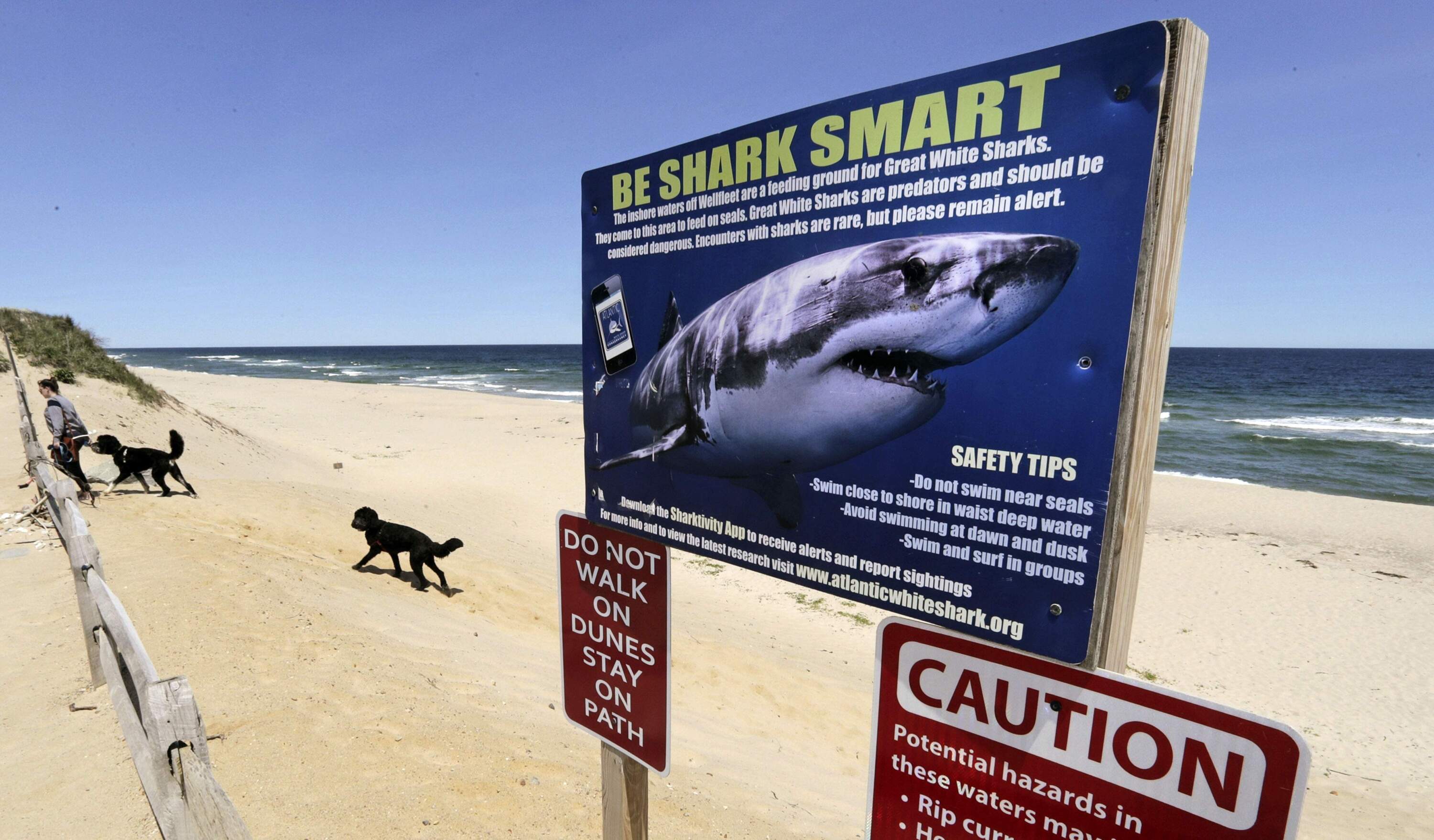Advertisement
How ‘Jaws’ launched 50 years of great white shark research

Friday marks 50 years since the summer blockbuster “Jaws” hit theaters and scared a generation of beachgoers.
The story follows three men in pursuit of a great white shark terrorizing the people and shores of a fictional New England town. It was filmed on Martha's Vineyard, and reignited existing fears of sharks there and around the country.
But it also inspired new generations of researchers interested in the apex predators.
Greg Skomal is one of them. A senior biologist at the state's Division of Marine Fisheries, he spoke with WBUR’s Morning Edition about what science has learned about great whites and other sharks since “Jaws” was released.
Almost everything we know about great white sharks came after ‘Jaws’
Before the film, research on great white sharks was practically nonexistent. Most people thought of sharks as insatiable beasts on the hunt for humans.
“Back in those days the only good shark was a dead shark,” Skomal said.
The film really tapped into this fear. But that’s changed dramatically.
”We've seen an explosion in research, not only here in the Atlantic, but on a global scale,” Skomal said. That has really changed … our perspectives when it comes to this species.”

Since the film, sharks’ reputations have become much more nuanced and what we’ve known has expanded. They can live into old age — over 70 years old in some cases. Some travel hundreds or thousands of miles in their lifetimes.
“The more we understand great white sharks, the more we respect them and the more folks want to protect them,” Skomal said.
Seeing sharks near the shore is a good thing
In recent years, photos and videos have captured sharks cruising near beaches on the Cape. And while seeing a fin can be scary if you’re on said beach, Skomal said spotting sharks in our oceans is a sign of success.
In 1972 — just three years before ‘Jaws’ was released — the Marine Mammal Protection Act became law. It banned the hunting of marine mammals, including grey seals who had previously been heavily hunted for their fur and meat. The seal population recovered, and sharks who ate the seals returned.
“This is a natural ecosystem,” Skomal said. “This is actually a conservation success story.”
Still, more sharks in the area could lead to more overlap between them and humans.
“That adds to the complexity … when we have to balance the needs of people with the needs of these two species,” Skomal said.
Technology can boost safety
Skomal said he and other shark scientists still have a lot to learn about the apex predators. New technology, like underwater cameras, allow scientists to track shark movement.
”We're still very much interested in better understanding [the sharks’] day to day, hour to hour, minute to minute activities,” Skomal said. “How does it spend its day and how can we use that information that we learn to enhance public safety.”
Skomal said he hopes with more knowledge, people will feel more secure when they come down to the Cape.
This segment aired on June 20, 2025.

